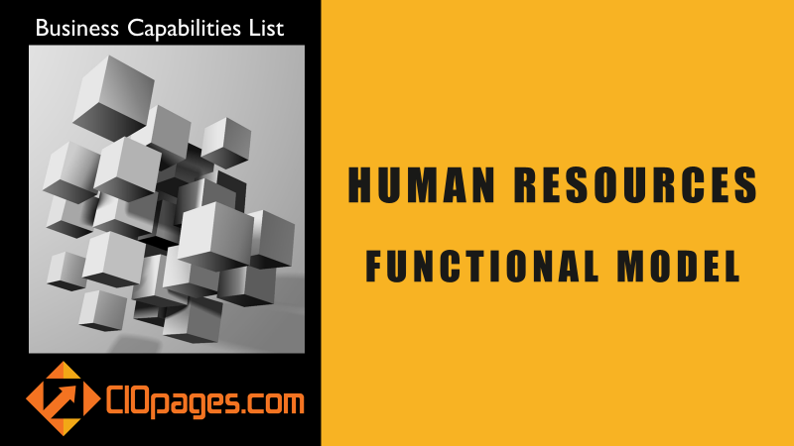Human Resources Functional Model
By: Ciopages Staff Writer
Updated on: Feb 25, 2023
 Human resources functional model is a detailed decomposition and a grouping of all the key functions of a best-in-class HR department. The HR functional decomposition, also known as HR capability model, is a tool that allows HR leaders to understand the big picture as well as drill down into a specific area for underlying capabilities.
Human resources functional model is a detailed decomposition and a grouping of all the key functions of a best-in-class HR department. The HR functional decomposition, also known as HR capability model, is a tool that allows HR leaders to understand the big picture as well as drill down into a specific area for underlying capabilities.
The human resources functional model is a logical grouping of key functions layered into ever-increasing levels of granularity. For example, it is easy to fathom “Employee Benefits Management” is one of the core HR capabilities. However, going deeper will provide a perspective about “Retiree Communications” as a key cost driver given the numerous calls, and support cases which result from lack of communication.
Potential Use Cases for Human Resources Functional Model:
Roles and Responsibilities:
A detailed Human Resources Functional Model helps in mapping resources to all key functions and assigning the responsibilities based on a cluster of related capabilities. The advantage of a detailed list of HR functions will allow the leadership not to miss functions because they are not the top of mind.
Furthermore, having clear guidelines on who owns what reduces ambiguity, conflict, and things falling off between the cracks.
HR Transformation Roadmap:
Today, the two major macro factors – the digital revolution and the entry of millions of millennials into the workforce – have been responsible for rethinking the HR operating model and reinventing how HR needs to deliver on the overall experience and expectations.
A full-fledged list of HR functions can help in developing an integrated and holistic view of the human resources function and envision the future state of the various capabilities in a cohesive roadmap.
HR Software System Selection:
The HRIS/HRMS/HCM software suites are comprehensive in the range of modules and the coverage of features and functionality. The traditional requirements gathering is often at too high a level or in the weeds and hence mapping it to the features of a well-structured HR Software System is not a fruitful exercise. Instead, an integrated list of detailed HR capabilities will help in understanding the coverage and gaps rather easily.
Cost Transparency:
When a CHRO faces a question of why does HR function that a lot, a detailed list of HR functions with the breakdown and assignment of expenses to granular services and capabilities will shed light on the true footprint, cost structure, and value. The granular costing of HR services will be a way to calibrate the spend and perform a cost-benefit analysis.
Alignment of Business and Technology Teams:
Generally, in most companies, the business and technology teams speak a different language and are not on the same page when it comes to technology enablement of HR capabilities. A holistic list of granular HR functions allows the business and technology teams to be on the same page.
The alignment of business and technology around a common language – the capabilities – is a key value proposition of business architecture.
Competency Development:
The HR functional decomposition also allows for the HR leadership to plan and execute competence development programs for staff. For example, while all of the employees in the broader human resources world are deemed as “HR staff,” there is a wide variety of skills and competencies required based on the specific role. For example, a recruiter’s competencies are different than a benefits administrator, and so are the skill needs for a leadership development manager or a compensation benchmarking person.
How else will you use a human resources functional model in your company? Please share your thoughts.
Related Products:
-
Human Resources Capabilities Model
U.S. $699 – U.S. $1,999Category : Capability Models
View Product This product has multiple variants. The options may be chosen on the product page